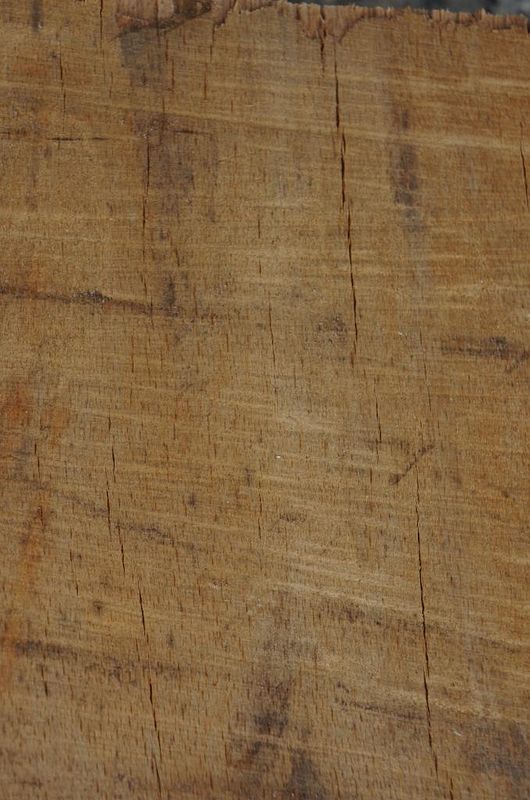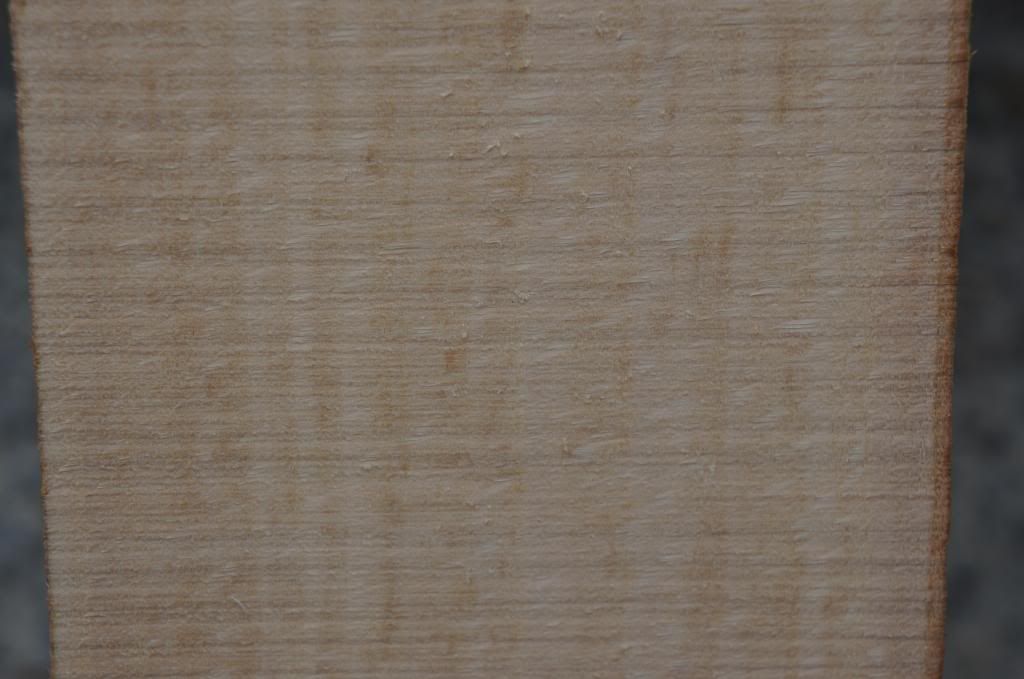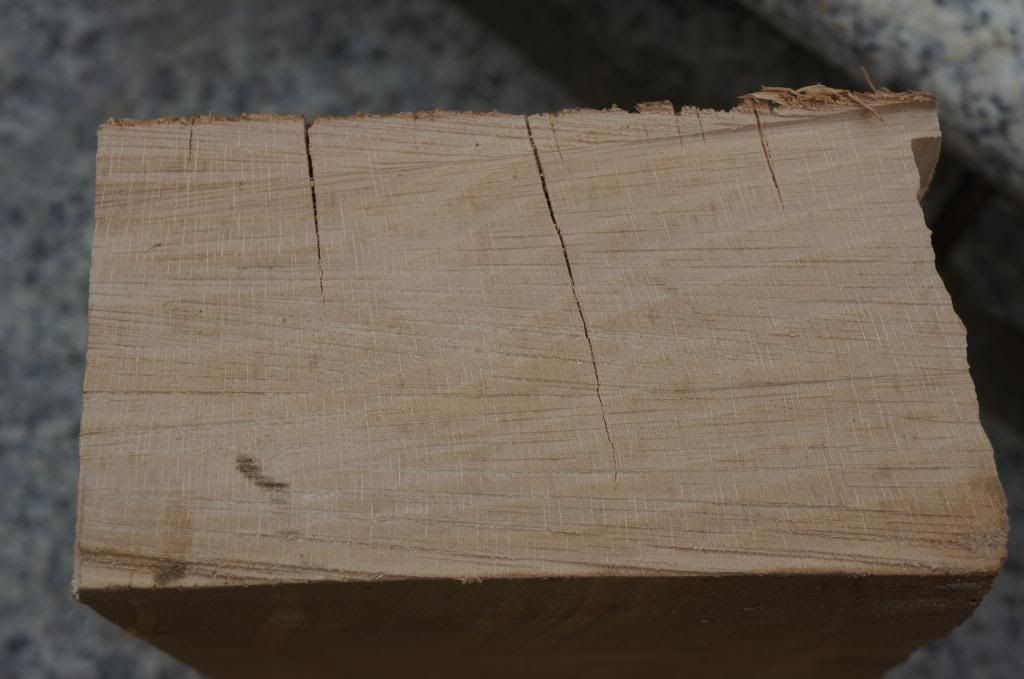Daninvan
ArboristSite Operative
So I milled up this large beech back at the end of December. It's the same tree that I found the bullet in, although that doesn't really matter for this problem.
I have had a lot of trouble getting some of the larger slabs to dry without cracking. Some of them I had stacked in my regular woodpile beside my house. Others that were too large to fit in the woodpile (more than ~4' wide) I leaned against the north wall of my garage and covered them with some corrugated fibreglass sheets. All were anchorsealed.
So those slabs which were leaning against the garage cracked terribly in less than four months, and I am trying to understand why these slabs would crack and the others from the same beech log in the wood pile have not (at least not yet anyways!).
Here is what I know about it.
First, I have had mixed results with beech in the past. I only cut up two other beech logs, much smaller than this one and one cracked and one warped but did not crack.
My bowl buddy who also took some of the beech told me two things about his experience with it. First, that it was the wettest wood he had ever turned. And he turns almost exclusively freshly cut local wood. Second that any pieces that had anything other than perfectly straight grain cracked on him.
For me, the cracks were running lengthways down the log, mostly in the middle third, so that the outer portions of the slabs were mostly ok, while the centre was full of cracks. While some of the cracks started at the ends despite the anchorseal, others started and ended in the slab. The cracks were mainly on one face of the log, the face that was away from the garage as they were leaning. Here is a closeup of some of the cracks.

So first I sawed the big 48" wide slabs cut down into three roughly 16" wide slabs. The two outer slabs from each were mostly OK, I cut them a bit shorter if there were any cracks on the ends and reanchorsealed in that case. Then I took the middle slabs to my bandsaw and cut them up into smaller pieces, trying to salvage what I could. I noticed that there appeared to be a band of darker (drier?) wood on the outside face of each slab. It was thicker on the cracked face (to the right in the photo below).

Here is a shot of some of the cracks. You can see they go deep into the slab. The big one in this photo went almost completely through the slab! Most were not quite that bad, but there were several like this one.

It's not very clear in the above photo, but the cracks are perpendicular to the grain lines.
So it seems that from the thickness of the bands on the surfaces of the slabs (second photo) that one face was drying more quickly than the other face. I would have expected then that the slab would cup in that direction (but I didn't notice any cupping), and the cupping would cause cracking in from the opposite face. My slabs are cracking from the more-quickly-drying face which is the opposite of what I would expect. So I am puzzled! Any other theories?
I have had a lot of trouble getting some of the larger slabs to dry without cracking. Some of them I had stacked in my regular woodpile beside my house. Others that were too large to fit in the woodpile (more than ~4' wide) I leaned against the north wall of my garage and covered them with some corrugated fibreglass sheets. All were anchorsealed.
So those slabs which were leaning against the garage cracked terribly in less than four months, and I am trying to understand why these slabs would crack and the others from the same beech log in the wood pile have not (at least not yet anyways!).
Here is what I know about it.
First, I have had mixed results with beech in the past. I only cut up two other beech logs, much smaller than this one and one cracked and one warped but did not crack.
My bowl buddy who also took some of the beech told me two things about his experience with it. First, that it was the wettest wood he had ever turned. And he turns almost exclusively freshly cut local wood. Second that any pieces that had anything other than perfectly straight grain cracked on him.
For me, the cracks were running lengthways down the log, mostly in the middle third, so that the outer portions of the slabs were mostly ok, while the centre was full of cracks. While some of the cracks started at the ends despite the anchorseal, others started and ended in the slab. The cracks were mainly on one face of the log, the face that was away from the garage as they were leaning. Here is a closeup of some of the cracks.

So first I sawed the big 48" wide slabs cut down into three roughly 16" wide slabs. The two outer slabs from each were mostly OK, I cut them a bit shorter if there were any cracks on the ends and reanchorsealed in that case. Then I took the middle slabs to my bandsaw and cut them up into smaller pieces, trying to salvage what I could. I noticed that there appeared to be a band of darker (drier?) wood on the outside face of each slab. It was thicker on the cracked face (to the right in the photo below).

Here is a shot of some of the cracks. You can see they go deep into the slab. The big one in this photo went almost completely through the slab! Most were not quite that bad, but there were several like this one.

It's not very clear in the above photo, but the cracks are perpendicular to the grain lines.
So it seems that from the thickness of the bands on the surfaces of the slabs (second photo) that one face was drying more quickly than the other face. I would have expected then that the slab would cup in that direction (but I didn't notice any cupping), and the cupping would cause cracking in from the opposite face. My slabs are cracking from the more-quickly-drying face which is the opposite of what I would expect. So I am puzzled! Any other theories?




